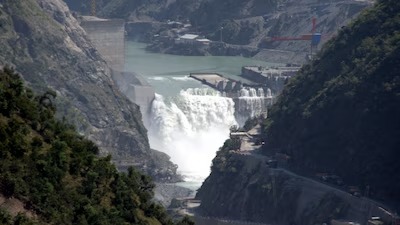New Delhi: One of the world’s strongest earthquakes since 2011 struck Russia’s Far East early Wednesday, triggering tsunami waves across the northern Pacific and prompting urgent warnings for regions including Japan, Alaska, Hawaii, and parts of North America.
The 8.8-magnitude quake, centered roughly 119 kilometers southeast of Petropavlovsk-Kamchatsky on Russia’s Kamchatka Peninsula, occurred at a depth of 20.7 kilometers. The U.S. Geological Survey initially reported an 8.0 magnitude before upgrading it to 8.8. It is the strongest quake in the area since 1952 and among the most powerful globally since Japan’s devastating 9.0 earthquake and tsunami in 2011.
Tsunami sirens blared across Honolulu late Tuesday, prompting residents to seek higher ground. The Pacific Tsunami Warning Center issued alerts for all Hawaiian islands, urging immediate action to protect life and property. Waves were expected to reach Hawaii by 7 p.m. local time.
In Russia, the first tsunami wave hit Severo-Kurilsk in the Kuril Islands. Regional Governor Valery Limarenko confirmed residents were safely evacuated and remained on higher ground as a precaution. Petropavlovsk-Kamchatsky, a city of 180,000 people, reported swaying buildings, damaged cars, power outages, and disrupted mobile services. While several people sought medical aid, no serious injuries were reported.
Japan’s Meteorological Agency recorded a 40-centimeter wave along Hokkaido’s southern coast and suspended ferry services between Hokkaido and Aomori, as well as Tokyo’s island routes. Local train lines and Sendai airport operations were also disrupted. However, no abnormalities were reported at any nuclear power facilities, including the Fukushima Daiichi plant, where around 4,000 workers were relocated to higher ground as a safety measure.
The quake also triggered tsunami advisories for the U.S. West Coast, including Oregon, California, Washington, and Canada’s British Columbia. Oregon authorities advised coastal residents to avoid beaches, harbors, and marinas as waves between 1 to 2 feet were expected late Tuesday night.
In the Philippines, authorities warned eastern provinces facing the Pacific to brace for waves of up to 1 meter, urging people to stay away from beaches. “Even small waves can be dangerous and continue for hours,” said Teresito Bacolcol of the Philippine Institute of Volcanology and Seismology.
New Zealand, located over 9,600 kilometers away, also issued coastal warnings. Authorities alerted the public to “strong and unusual currents” and advised people to vacate coastal zones, rivers, and harbors.
Experts from the Russian Academy of Sciences warned that aftershocks—some already reaching magnitudes of 6.9—could persist for weeks and urged caution along vulnerable coasts. The quake follows a series of significant tremors in July near Kamchatka, including a 7.4-magnitude event offshore.
Though widespread infrastructure impacts and evacuations have occurred, no fatalities or serious injuries have been confirmed so far. Authorities remain on high alert as seismic activity continues in the region.
Trending
- MLAs Unite, Say ‘Legalise Dhirio’
- Oppn Seeks Strict Action Against Food Safety Violators Amid Rising Cancer Concerns
- Pending Laadli Laxmi & Griha Aadhar Applications to Be Cleared Soon: Vishwajit
- Govt to Address Acute Staff Shortage at Cansaulim PHC: Min Vishwajit
- Malegaon Blast Case: All 7 Accused, Including Pragya Thakur and Lt Col Purohit, Acquitted After 17 Years
- Google to Invest $6 Billion in Mega Data Centre in Andhra Pradesh; State Secures Total $7.9 Billion in Tech Deals
- Govt Mulls Ban on Sale of Glass Liquor Bottles Along Coastal Belt
- India Questions Ball Selection Protocol Amid Claims of Preferential Treatment to England








